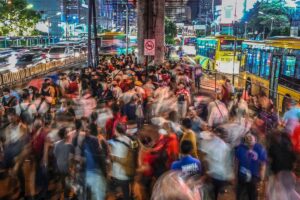
A recent report by the International Labour Organization (ILO) reveals alarming statistics that demonstrate the growing threat to the global workforce due to climate change. According to the report, more than 70% of workers worldwide face hazards related to climate change, leading to hundreds of thousands of deaths annually. The most affected are often the poorest workers who are exposed more frequently and intensely to climate extremes such as heatwaves, droughts, wildfires, and hurricanes.
The report, titled “Ensuring safety and health at work in a changing climate,” underscores the urgency for governments to enhance protections for workers as climate-related risks escalate. Air pollution alone is responsible for approximately 860,000 work-related deaths among outdoor workers each year. Additionally, excessive heat and UV radiation contribute to nearly 19,000 deaths annually from conditions like non-melanoma skin cancer.
The ILO highlights the necessity of revising existing legislation or crafting new regulations to cope with evolving climate hazards. While some countries have made progress, such as Qatar with its heat protection policies for workers, many still lack sufficient regulations to address the range of dangers, particularly in sectors like agriculture where pesticide use is increasing.
The report also points out that climate hazards are not isolated; they often coexist, creating a “cocktail of hazards” that includes surging temperatures, UV radiation, and air pollution—each affecting around 1.6 billion people globally. This multifaceted exposure makes it challenging to pinpoint the exact portion of the 3.4 billion global workforce at risk, but the impacts are undeniably severe, linking climate-related hazards to chronic illnesses and disabilities.
Moreover, the ILO warns that even technologies designed to mitigate climate change, such as solar panels and lithium-ion batteries, pose new risks due to the toxic chemicals they contain. This paradox highlights the complex challenges in balancing climate solutions with occupational safety.
Looking ahead, the ILO plans a significant meeting in 2025 to bring together government, employer, and worker representatives to forge policy guidance on managing climate hazards. This initiative aims to address the disproportionate impact of climate change on vulnerable workers and ensure that global labor forces are protected against these growing threats.




















No comment yet, add your voice below!